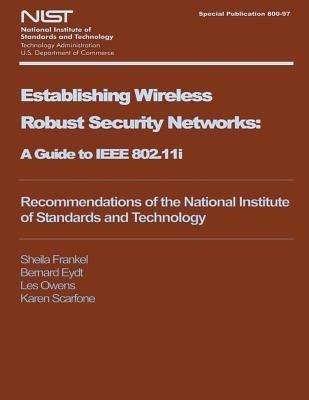
- We will send in 10–14 business days.
- Author: U S Department of Commerce
- Publisher: CreateSpace Independent Publishing Platform
- Year: 2014
- Pages: 162
- ISBN-10: 1495291804
- ISBN-13: 9781495291807
- Format: 21.6 x 28 x 0.9 cm, softcover
- Language: English
- SAVE -10% with code: EXTRA
Reviews
Description
A wireless local area network (WLAN) enables access to computing resources for devices that are not physically connected to a network. WLANs typically operate over a fairly limited range, such as an office building or building campus, and usually are implemented as extensions to existing wired local area networks to enhance user mobility. This guide seeks to assist organizations in better understanding the most commonly used family of standards for WLANs-Institute of Electrical and Electronics Engineers (IEEE) 802.11-focusing on the security enhancements introduced in the IEEE 802.11i amendment. In particular, this guide explains the security features and provides specific recommendations to ensure the security of the operating environment.
EXTRA 10 % discount with code: EXTRA
The promotion ends in 20d.16:51:10
The discount code is valid when purchasing from 10 €. Discounts do not stack.
- Author: U S Department of Commerce
- Publisher: CreateSpace Independent Publishing Platform
- Year: 2014
- Pages: 162
- ISBN-10: 1495291804
- ISBN-13: 9781495291807
- Format: 21.6 x 28 x 0.9 cm, softcover
- Language: English English
A wireless local area network (WLAN) enables access to computing resources for devices that are not physically connected to a network. WLANs typically operate over a fairly limited range, such as an office building or building campus, and usually are implemented as extensions to existing wired local area networks to enhance user mobility. This guide seeks to assist organizations in better understanding the most commonly used family of standards for WLANs-Institute of Electrical and Electronics Engineers (IEEE) 802.11-focusing on the security enhancements introduced in the IEEE 802.11i amendment. In particular, this guide explains the security features and provides specific recommendations to ensure the security of the operating environment.


Reviews